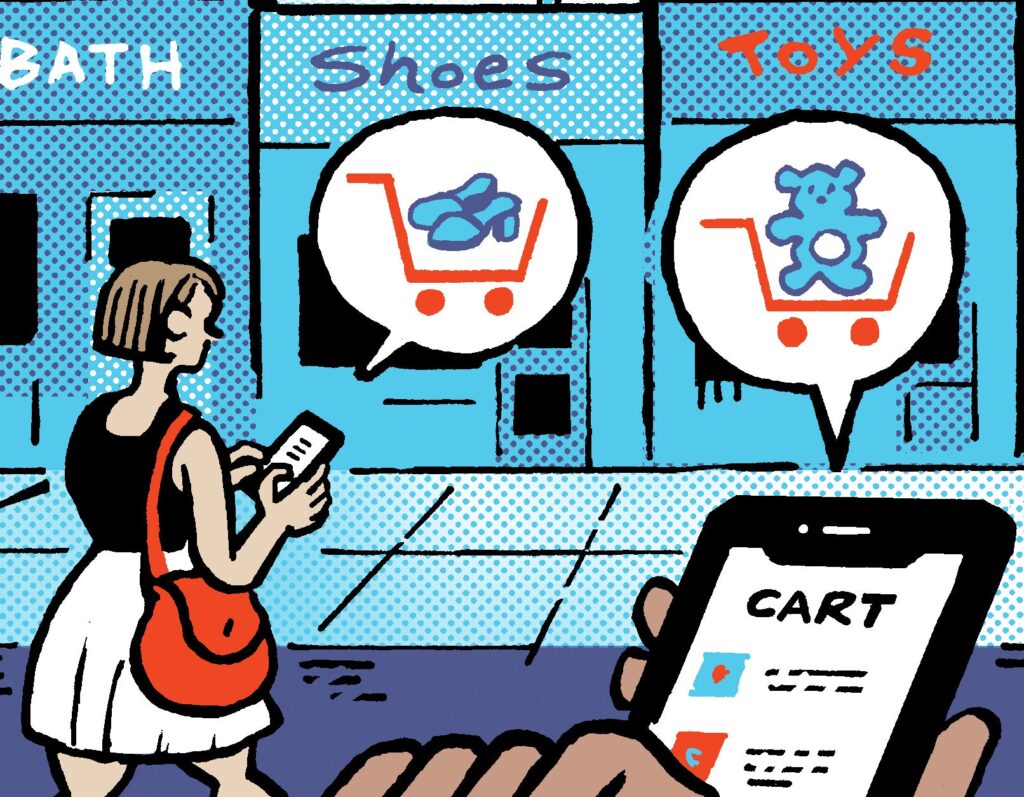 After several days of working very long hours on a pitch with our good friends over at Hoffman/Lewis, I think I was a bit fatigued. I was listening to Radio Paradise and suddenly found myself rocking out uncontrollably to REM.
After several days of working very long hours on a pitch with our good friends over at Hoffman/Lewis, I think I was a bit fatigued. I was listening to Radio Paradise and suddenly found myself rocking out uncontrollably to REM.
Erik (yes there is more than one Erik here at Swivel Media), our amazingly talented illustrator, was staring at me with a look I once gave my uncle as he cranked Quicksilver Messenger Service in his ’71 Dodge Dart. Before I knew it, Erik and I had killed 30 minutes talking about the deterioration of decent, popular music. He recommended two bands he’d recently seen in town, and I, without hesitation, downloaded a few songs off iTunes. Our conversation, combined with the fact that it was past dinner time and I was hungry, reminded me of a post I wrote a while back for an online discussion group about brand influencers. I still hear about it when I get a chance to speak at conferences, and most have tried the recipe that I sent out. I revised it a bit and figured that the CHIEF MARKETER loyalists would enjoy it. It’s important that I preface this anecdotal story with three things I did on this particular night that I thought I’d never do: go shopping for lasagna ingredients; get taught how to make lasagna; make lasagna. I don’t think I have enough room in this article to explain how I got to this point, but trust me, that story is more confusing than a David Lynch movie.
It all started when I picked up my friends Adam and Robert on our way to the local Safeway. Adam and Robert were disagreeing about what to buy for the lasagna. Not the ingredients. The brands. In case you are wondering, I was ignoring both of them, reading “Investors Business Daily” looking for my next short.
Adam was very brand loyal. As we made our way down each aisle, Adam sold us on each individual ingredient that was involved in the recipe. And there were tons of ingredients, as we’re not talking about your typical lasagna. This lasagna has pine nuts, a myriad of spices, pineapples, olives, tomatoes, peppers, onions, and three sauces. Seemed like a great recipe–probably way too California for Tony Soprano but maybe good enough for Michael Corleone to not send you fishing in Lake Tahoe.
This, however, was Robert’s recipe, and Adam had never made it. Robert had perfected this recipe over the past few years, and was going to teach Adam a thing or two about making lasagna. I had only decided to tag along so that I’d have the recipe for my next dinner club.
Well, Robert, somewhat mystified by Adam’s insistence on specific brands, reminded him it was his recipe. Then Adam looked at the both of us and said, “Trust me, it will be even better.” And that was all it took. In the confines of the grocery store aisles, Adam had become the teacher and Robert had become the student. Of course when we got back to Robert’s place, it was a different story.
The point is that Adam is a classic brand influencer. He influences his peers based on two key factors. First, he is naturally passionate about very specific things and likes to share his likes and dislikes with his friends. This is important, but it’s not enough jus to be passionate. My buddy Miles has unique taste in food, to put it nicely, that is not usually compatible with mine. No matter how passionate he might be about a restaurant, chances are I won’t take notice. But Erik from my office is someone who shares similar musical tastes and is considered very knowledgeable in this area. Therefore I take his musical recommendations without debate. Thus the brand influencer not only has to be passionate and authentic, but his or her opinion must also be valued.
What Robert knows about Adam is that he has similar taste in food. So when Adam says, “Trust me” when it comes to food, Robert does. This same concept applies to all types of consumer products. For many of us, our parents were the ultimate brand influencers. If my mom says to use Tide, I’m using Tide.
To find potential brand influencers who are both passionate and respected, get together your focus groups, find your market mavens, and get them on your brand’s team. Some people have an innate ability to persuade other’s purchasing patterns, even without knowing them. All companies should look at brand influencer programs as a major contributing factor in increasing short- and long-term purchasing patterns.
Erik Hauser is creative director/founder of San Francisco-based marketing firm Swivel Media and founder of IXMA, the International Experiential Marketing Association. He also moderates the Experiential Marketing Forum and pens the biweekly BrandAnimation column for CHIEF MARKETER.
 Network
Network

